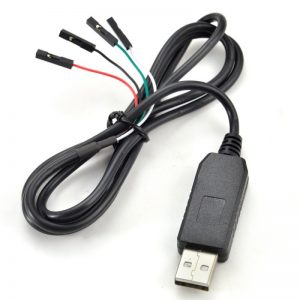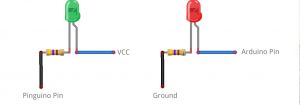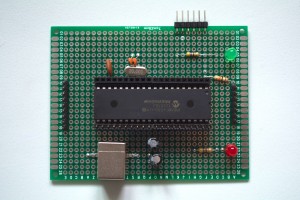I became re-interested in Microchip PIC assembler coding recently. I hadn’t really used it for a number of years (since before 2009). The ‘C’ language is usually efficient enough and easier to code for most projects I do. I used one of my DIY PIC18F4550 Pinguinos for experimentation. As you might guess, I decided to …
Category: Pinguino
Jun 20 2016
LM317 to output 3.3 Volts
I created a simple circuit using the LM317 to output 3.3 volts from a 5V or greater input voltage. Why? Because, a number of modules for the Arduino (or Pinguino) take 3.3 Volts. It’s true, some of the Arduinos do have a 3.3V voltage regulator (and thus a source of 3.3V), however, that might not …
May 20 2016
How to Power an LED (Arduino vs. Pinguino)
How to Power an LED (Arduino vs. Pinguino) might seem silly, however, if you take a look at the following graphic, you will hopefully notice something interesting. The Pinguino sources the power to the ‘user’ LED differently that does an Arduino. The Pinguino wiring is represented by the green LED and the Arduino wiring is …
Dec 27 2015
Do-It-Yourself Pinguino PIC18F4550 Board
I just got a good deal on several PIC18F4550 chips. So, I decided to make a Do-It-Yourself Pinguino PIC18F4550 Board to test them out. The Pinguino boards are based on the same concept as an Arduino. However, instead of Atmel chips, Microchip PIC® chips are used. All of the Pinguino boards use PIC® chips with …





Recent Comments